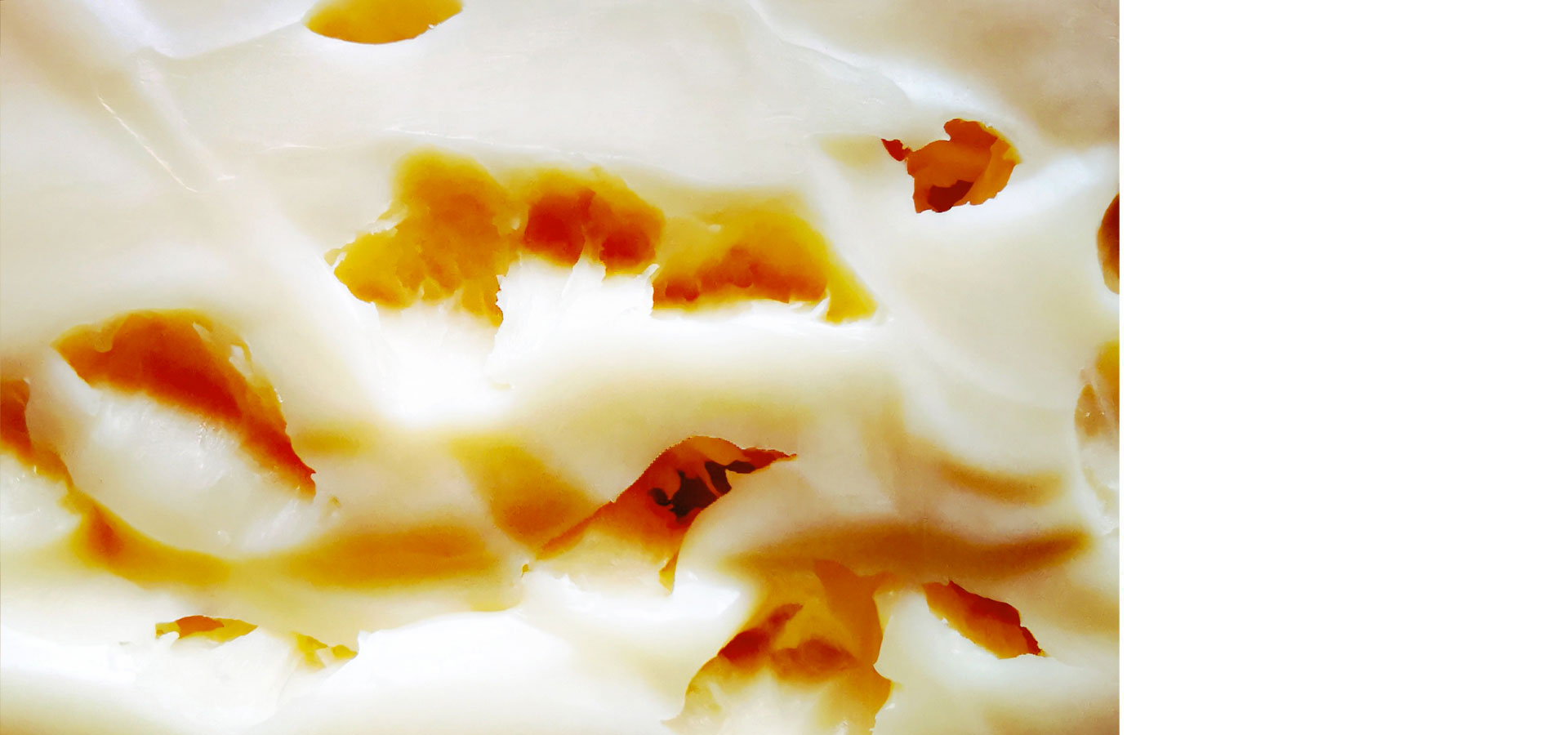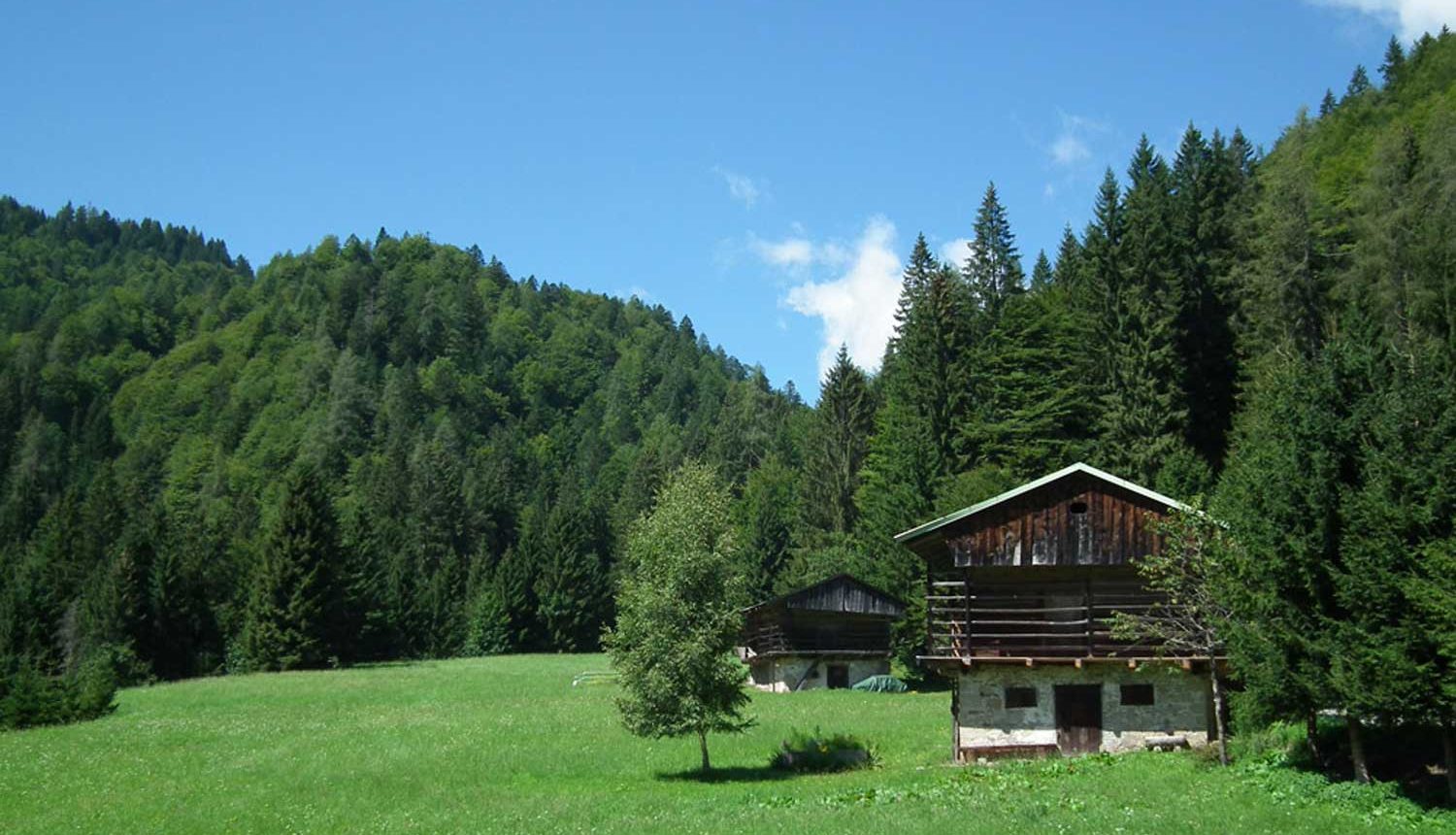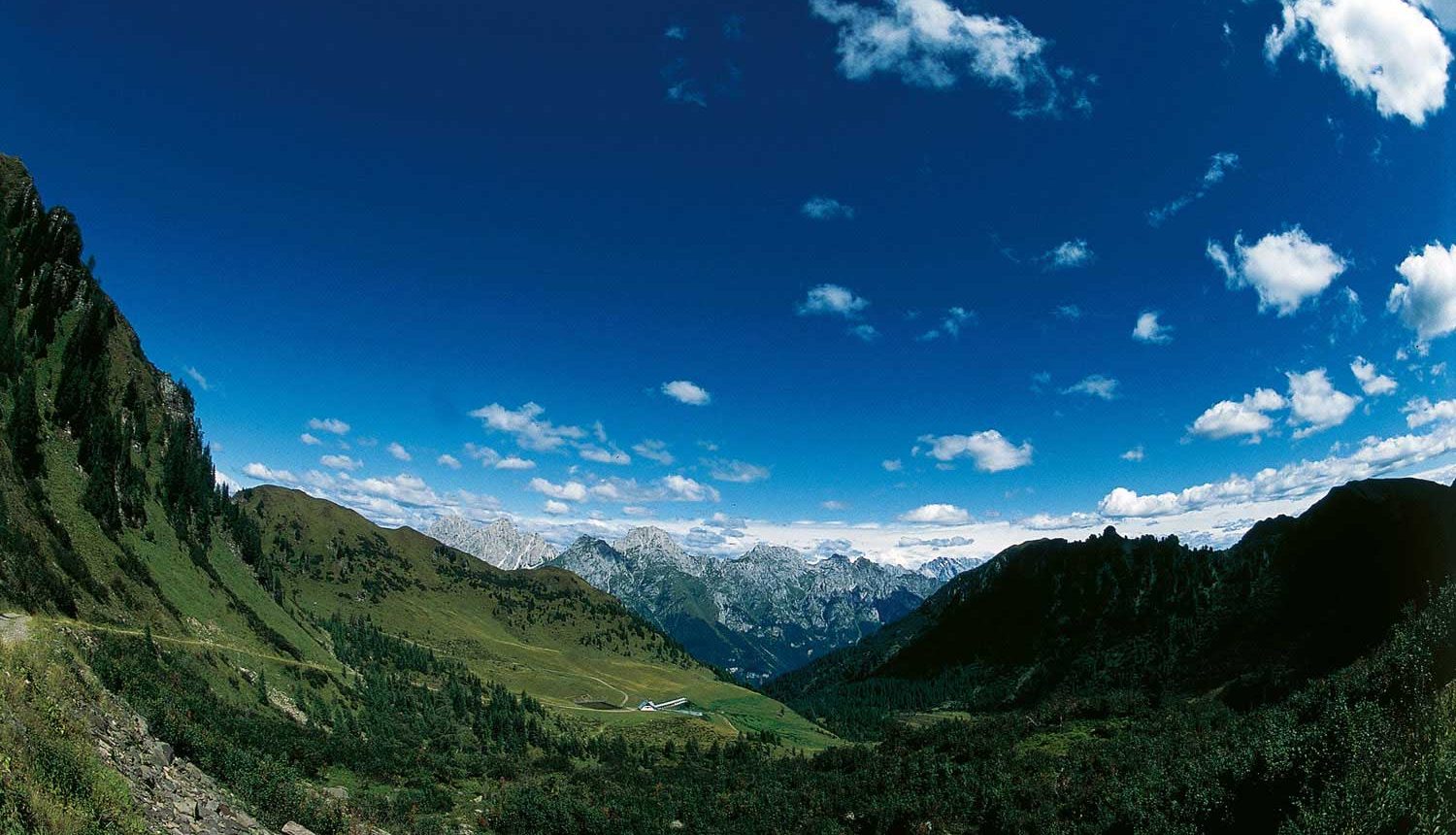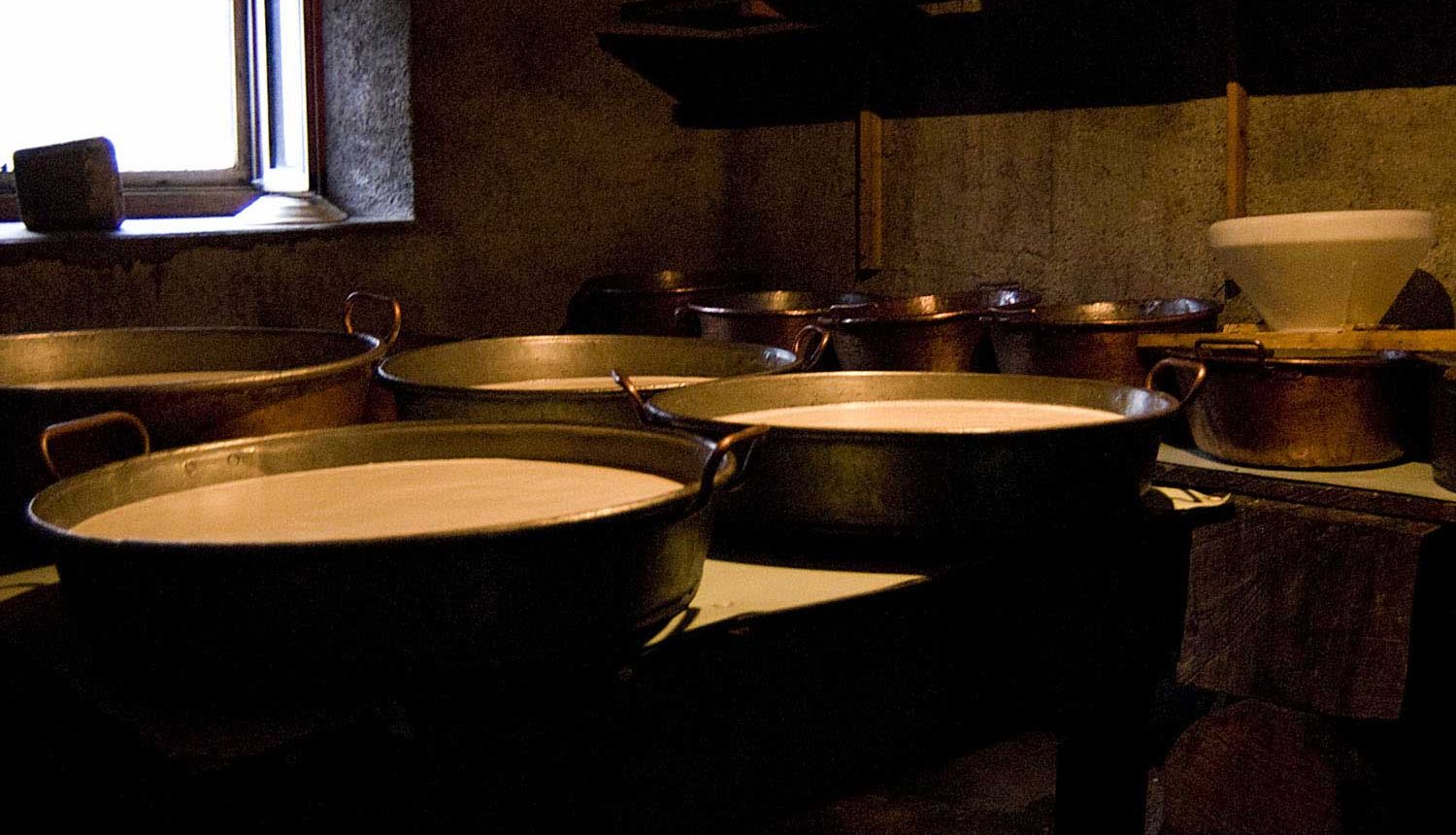
A brief history
Cacio di Carnia: it’s good for you because it was made good!
This exceptional cheese is tied to ancient dairy traditions with distant origins, (7-8 centuries), and was first produced (the very same way it is today) by the monks of the Moggio Udinese Abbey on the cretaceous and chalky plateaus of the Montasio massif.
This grazing land was the territory of the abbey and its reputation for producing high quality cheeses during the hot Summer season spread, almost by simple osmosis, to the cacio-caseus (cheese-making process) of Carnia’s Alpine pastures..
The real riches and resources that gave substance and authenticity to this excellent product in the past and continue to do so today, are the pastures-grazing lands of the Alps which make up 59% of the entire productive area of this mountainous part of Carnia.
An act of donation dating back to 1763 was found in the Abbey of Nonantola in the Emilian-Modenese Apennines. Three brothers, all monks with Lombard origins, ceded their properties in Carnia, Friuli to two monasteries founded by them which bear witness to the ancient traditions of this mountain pasture that borders with Austria to the north and Slovenia to the east.
Some cottages, still operational today, are mentioned in documents dating back to 1067, 1177, 1279, and 1300 stored in archives in Aquileia and Venice.
The production guidelines have been the same for centuries: the migration to Summer pastures takes place from mid-June to mid-September and lasts about 90 days. The milk obtained from the evening milking of a cow is kept cool until the following morning.
This milk, along with that obtained in the morning, without being skimmed or pasteurizd, is then used to make the cheese. Using 'raw' milk.
The milk is placed in clean, shiny copper boilers fueled by beechwood fires and heated to 35°C so the rennet dissolves then stirred continuously by hand using different tools to reduce the curd into minute granules: the patience and skills of the cheesemaker become evident during this phase.
The boiler is then placed back on the fire and heated to a maximum temperature of 48°C and where the curd reaches the right density. Now the cheese can be collected in linen cloths, placed in wooden forms, pressed and allowed to drain for at least 12 hours. Then it is salted in brine and stored in specially darkened, well ventilated rooms.
The distinct, spicy flavor of the malga cheese is accentuated by the presence of goat’s milk which is added to cow's milk, which, if used in modest quantities, intensifies these characteristics. This wonderfully unusual, sometimes slightly bitter Alpine cheese can attribute its flavors directly to the unique grazing conditions present in the Malga di Carnia, with pastures located in an uncontaminated, well ventilated climate at an altitude of 1500-1800m.
Cacio di Carnia is a premium quality product. If ripened only to 2-3 months it is a sweet and delicate cheese, easy on the palate and excellent for those following a light and healthy diet.
It has a high protein content (46%) and is easily digestible. It is rich in minerals, particularly phosphorus and calcium and is therefore particularly suitable for children, athletes, active or convalescent people and the elderly. It contains Vitamins A, B, D and E.
The fact it has remained unchanged over time and preserves its wholesome and genuine characteristics, makes us strive to sustain and safeguard a product that like very few, has survived
Malga Alta Carnia
Via Sauris di Sotto, 98A
33020 - Sauris (UD) Italy
Write us:
info@malgacarniaformaggi.it







